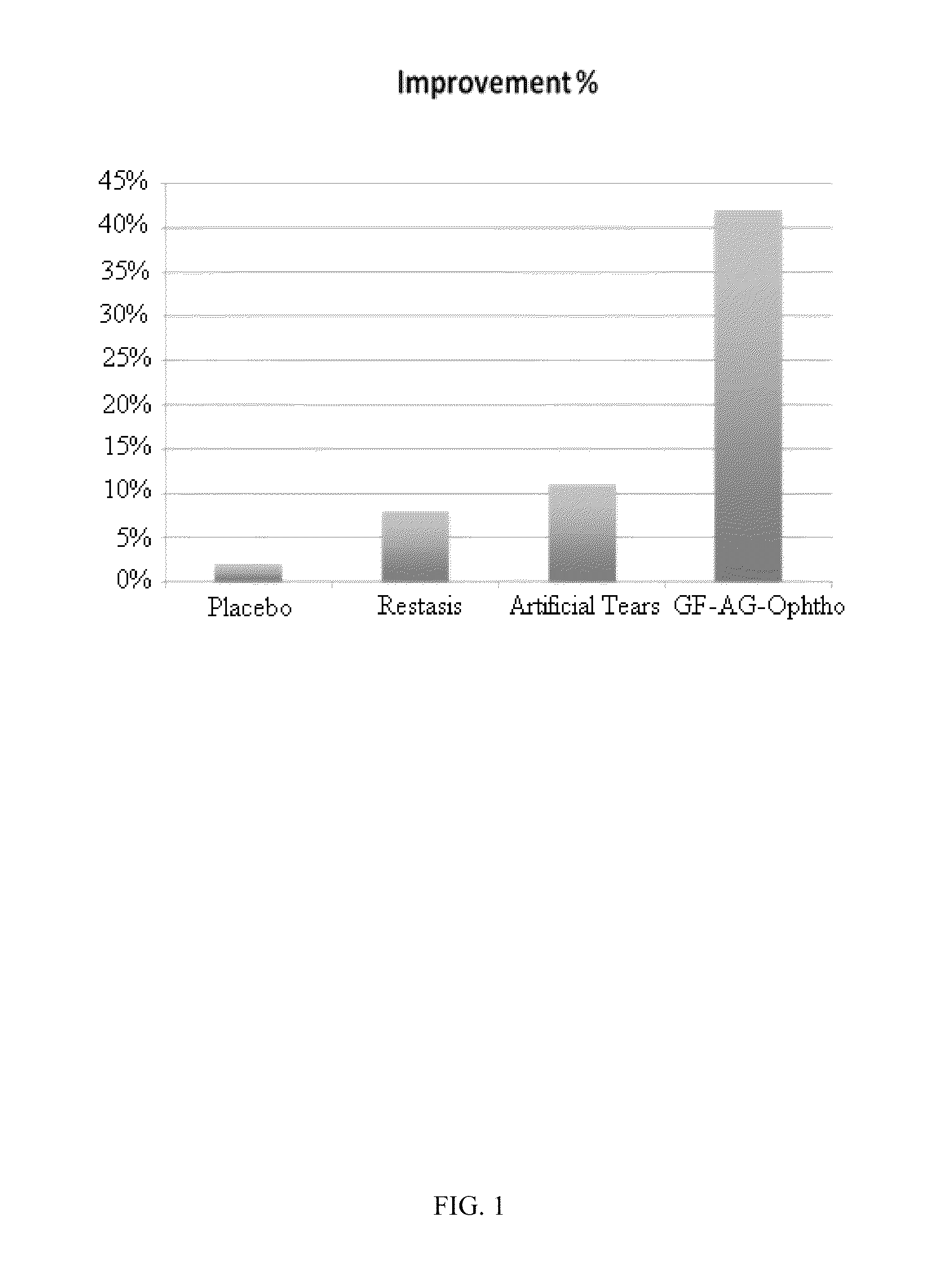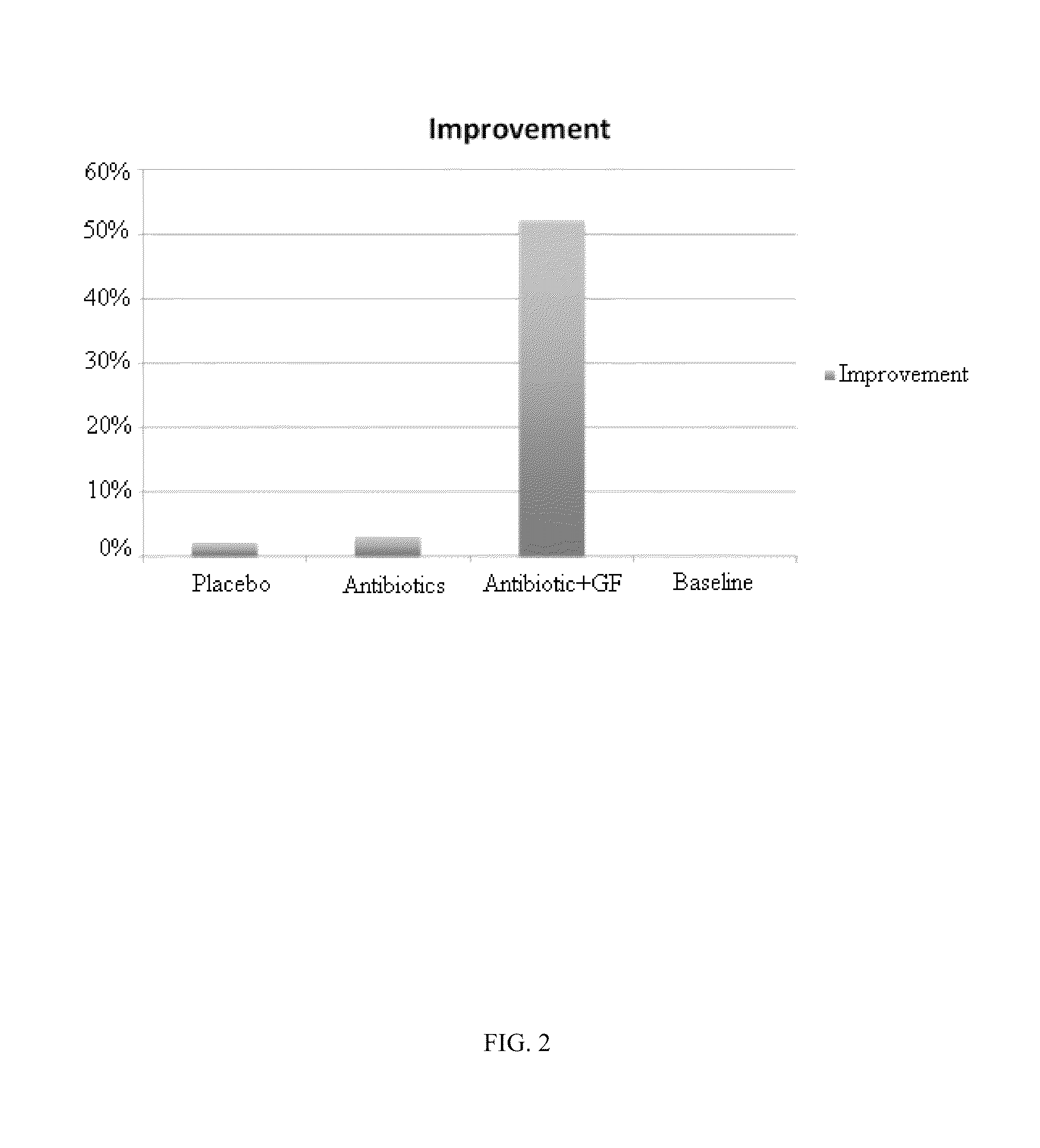Human corneal epithelial cell line PTA-120527
a corneal epithelial cell and human corneal technology, applied in the field of ophthalmic compositions, can solve the problems of rose bengal staining, squamous metaplasia, and inability to completely reverse the ocular surface disease seen in sjogren's syndrome, and achieve the effect of ensuring the structure and stability of the tear film, slowing or preventing the changes to the ocular surfa
- Summary
- Abstract
- Description
- Claims
- Application Information
AI Technical Summary
Benefits of technology
Problems solved by technology
Method used
Image
Examples
example 1
Preparation of the Ophthalmic Composition
[0119]The anterior segment of the eye was removed under sterile conditions by a circular incision through the sclera 2 mm below the limbus. The segment was carefully transferred into a dish containing Dulbecco's modified Eagles medium (DMEM), supplemented with 3% foetal calf serum (FCS), 50 mg / ml of gentamicin and 5 mg / ml of amphotericin B. The iris-ciliary body, lens, and corneal endothelium were removed microscopically. The resulting specimen was dissected into three zones; i.e., the central cornea, peripheral cornea and limbus, and freed of any adhesive tissue fragments. 5 ml of 0.25% trypsin EDTA was added and the resulting mixture was incubated at 37° C. After incubation of 1 hr, both the central and peripheral corneal specimens were centrifuged at 800×g for 10 min (rotating compact centrifuge 6×10 / 15 ml angle rotor). The epithelial sheets were resuspended in 0.25% trypsin and EDTA for 10 minutes with intermittent gentle shaking. Enzymat...
example 2
Treatment of Human Subjects Exhibiting Dry Eye with the Conditioned Media-Containing Ophthalmic Composition
[0125]The ophthalmic composition was formulated as above as an isotonic aqueous solution and topically administered to the eyes of human subjects and visual analog scale (VAS) studies were conducted as a measure of efficacy of the composition in subjects with dry-eye.
[0126]19 otherwise healthy, (7 males, 12 females), adult volunteers (ranging in age from 31-53) exhibiting dry eye were used for these studies. Volunteers signed comprehensive informed consent documents.
[0127]The subjects were dosed at one drop (about 0.1 ml) instilled 2 times a day into the eye of the subjects for 30 days. Subjects were followed for up to 2 years after treatment.
[0128]As illustrated in FIG. 1, subjects treated with the conditioned media-containing ophthalmic solution (GF-AG-Ophtho; bar 4) showed at least a four-fold improvement relative to placebo (bar 1), RESTASIS™ (0.05% cyclosporine ophthalmic ...
example 3
Subjects Exhibiting Corneal Lesions Treated with the Conditioned Media-Containing Ophthalmic Composition
[0129]The ophthalmic composition was formulated as above as an isotonic aqueous solution, except that bacitracin+neomycin was added to achieve a final concentration of 500 mg / dose. The composition was topically administered to the eyes of human subjects and assessment was made using ophthalmic eye surgery microscopy.
[0130]13 otherwise healthy, (8 males, 5 females), adult volunteers (ranging in age from 31-53) exhibiting corneal lesions were used for these studies. Volunteers signed comprehensive informed consent documents.
[0131]The subjects were dosed at one drop (about 0.1 ml) instilled 4 times a day into the eye of the subjects for 1 week.
[0132]As illustrated in FIG. 2, subjects treated with GF-AG-Ophtho (bar 4) showed at least a ten-fold improvement relative to antibiotics alone as assessed by slit lamp microscopy.
PUM
| Property | Measurement | Unit |
|---|---|---|
| thick | aaaaa | aaaaa |
| thick | aaaaa | aaaaa |
| thick | aaaaa | aaaaa |
Abstract
Description
Claims
Application Information
 Login to View More
Login to View More - R&D
- Intellectual Property
- Life Sciences
- Materials
- Tech Scout
- Unparalleled Data Quality
- Higher Quality Content
- 60% Fewer Hallucinations
Browse by: Latest US Patents, China's latest patents, Technical Efficacy Thesaurus, Application Domain, Technology Topic, Popular Technical Reports.
© 2025 PatSnap. All rights reserved.Legal|Privacy policy|Modern Slavery Act Transparency Statement|Sitemap|About US| Contact US: help@patsnap.com


